The thunderous energy of the fa’ataupati, a dynamic dance requiring strength and agility that is used in the region to commemorate significant occasions, shook the stage. The seamless Polynesian-style harmonies of songs, inspired by the Writings of the Bahá’í Faith, reverberated through the air. And the Pacific breeze cooled the conference venue, constructed in the form of a fale—the traditional meeting space—with its oval shape, domed roof, and lack of walls. For three days, with intermittent periods of sunshine and rain, a joyful, energetic, and enthusiastic group of nearly 350 youth from Samoa and American Samoa electrified the atmosphere.
Just months earlier, on 8 February 2013, the Universal House of Justice announced the convocation of a series of youth conferences in locations spanning the globe. The message noted “the decisive contribution made by youth on every continent” and that the conferences were to “summon today’s youth to fully assume the responsibilities they must discharge”.
“We can’t transform society alone. We need others to help us, others to walk a path of service with.”
17-year-old from Vaitele, Samoa
The day this message was received around the world coincided with a gathering of young people in Apia, Samoa, who, in the peaceful environs of the Continental House of Worship for Australasia, had come together to reflect on their efforts to widen the circle of those contributing to the betterment of their communities. They shared, many with tears of joy, that it felt as though the message had been written to each of them personally.
After several months of anticipation and planning, participants gathered at the Tofamamao Conference Centre in Leauva’a, a coastal village just outside Apia, eager to learn about the opportunities of service that exist in their communities. Each morning began with prayers offered by youth from each of the three regions represented—the islands of Savai’i and Upolu in Samoa and the island of Tutuila in American Samoa. Continental Counsellors Sohayla Asari and Kirk Johnson, participating as representatives of the House of Justice, wore local Samoan attire during the conference—a gesture that was appreciated by the participants.
To encourage discussion and planning in light of different realities, workshops were conducted in large and small groups formed by community of residence. After one such session exploring the unique powers and challenges associated with the period of youth, a 17-year-old from American Samoa shared the following: “I’ve learned about ways in which we can live a coherent life, instead of fragmenting it into parts—something that has frustrated me because it’s like trying to live an impossible balancing act.” He added, “Service to the community and work, study, or family commitments aren’t actually competing ideas.”
In reflecting on the critical role of creating an environment of mutual support, an 18-year-old from Upolu said, “When we carry out acts of service, we should do so with all our hearts and be honest with why we are serving—we should be selfless. I’m going to tell my friends what I’ve learned about selfless service and the role of youth in transforming society, and ask them to serve with me. That way we will encourage one another and invite and inspire other young people to do the same.
When it rained, groups continued their study unhindered by the elements, huddled under tents and in the smaller fales that lined the beach. When the sun shone, participants scattered throughout the conference grounds, some choosing to sit in the shade of a coconut tree, while others sat by the seaside.
Like the perpetual waves of the Pacific Ocean that lap the shores of their island communities, those gathered knew that the conversations about the betterment of their communities did not begin and end with the conference itself. A 16-year-old from the island of Savai’i shared, “We were all looking forward to coming to the conference for the past several months with great anticipation, but now that we are here and learning about service, working together, and supporting one another, we can’t wait to get home to contribute to the transformation of our villages.”
MORE HIGHLIGHTS:
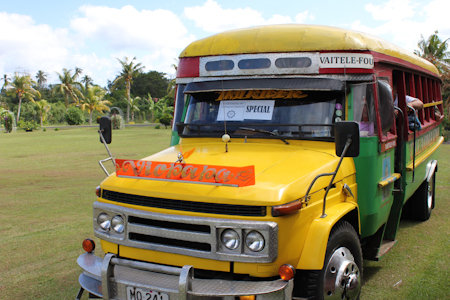
Participants travelled by plane from American Samoa, by boat from Savai’i (Samoa), and by bus from across Upolu (Samoa)
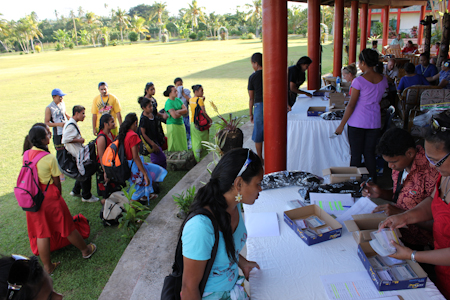
The conference was held at the Tofamamao Conference Centre in Leauva’a, a coastal village just outside Apia
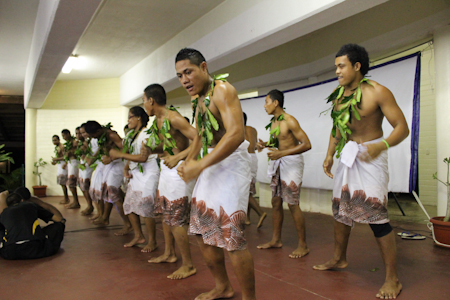
The conference opened with a fa’ataupati, a dynamic dance requiring strength and agility that is used in the region to commemorate significant occasions

The conference format included a combination of plenary and group sessions
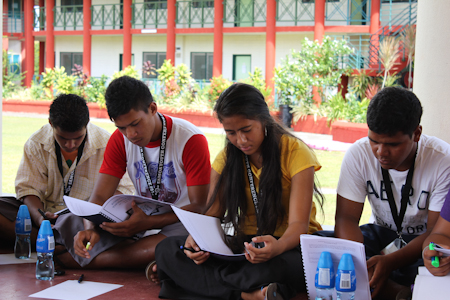
Participants study one of the sections of the material

Skits, songs, and other artistic expressions were used to articulate the conference themes
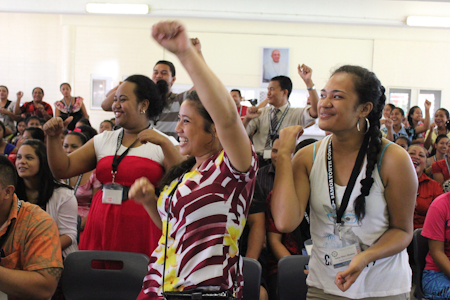
A joyful spirit imbued the atmosphere
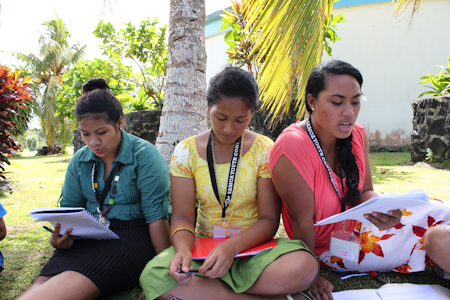
Workshops involved time for study, reflection, and the sharing of experiences
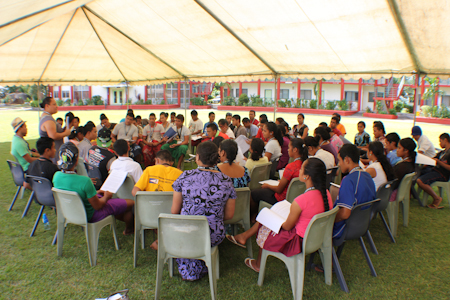
One group studies and reflects on a section of the materials with the assistance of a facilitator
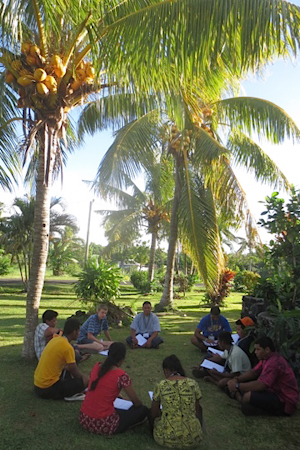
Participants spread throughout the conference grounds to study the conference material
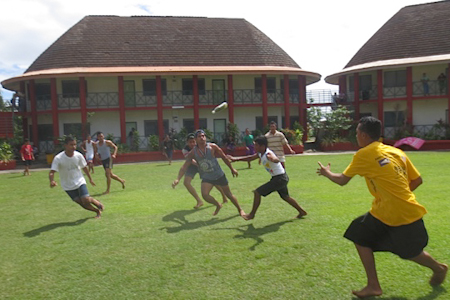
During breaks, participants enjoyed physical activity on the beautiful conference grounds
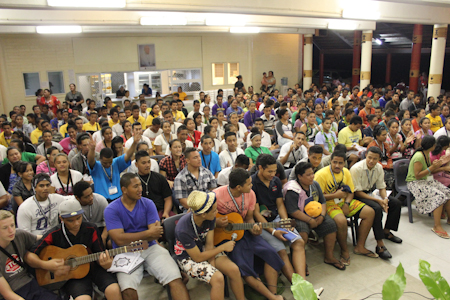
Evening plenary sessions included original artistic presentations created during the workshop sessions
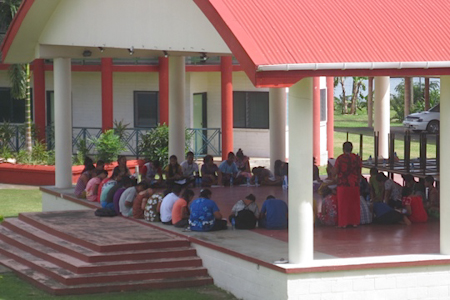
Many of the physical spaces used by the groups reflected traditional Samoan architecture, allowing a cool Pacific breeze to waft over the participants